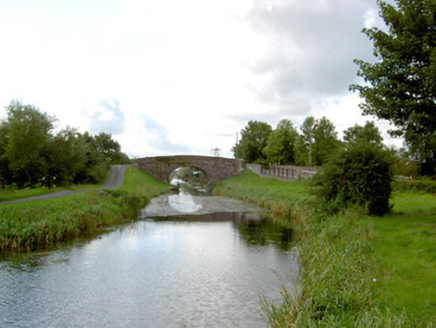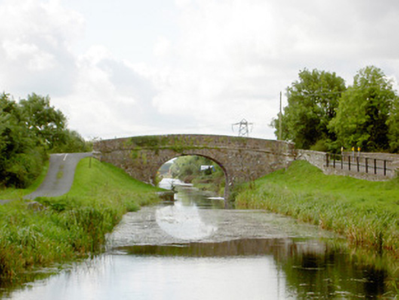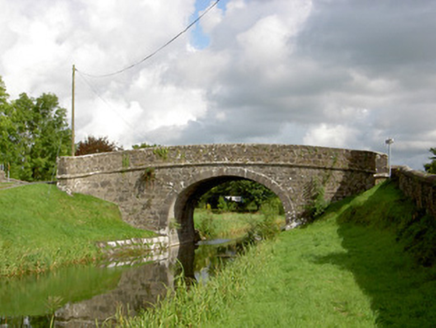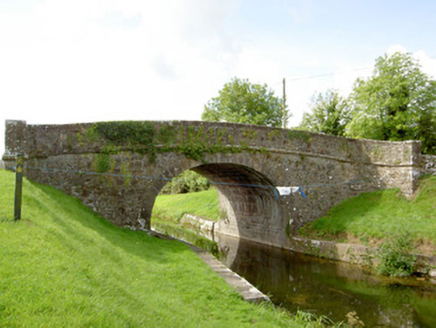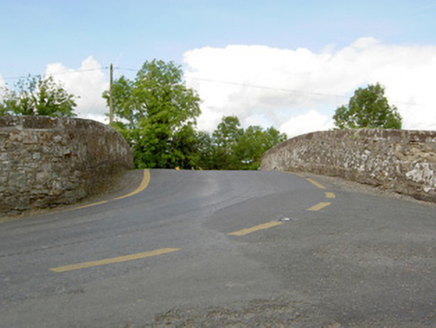Survey Data
Reg No
13402338
Rating
Regional
Categories of Special Interest
Architectural, Technical
Original Use
Bridge
In Use As
Bridge
Date
1810 - 1820
Coordinates
223017, 260006
Date Recorded
02/09/2005
Date Updated
--/--/--
Description
Single-arch humpbacked canal bridge carrying road over Royal Canal, built c. 1815. Round/elliptical-headed arch with dressed ashlar limestone voussoirs and dressed ashlar limestone masonry to barrel. Squared rubble limestone construction to spandrel walls, formerly rendered, with cut limestone string course at road/deck level. Squared rubble stone construction to parapets (formerly rendered) with curving ends terminated in dressed ashlar limestone piers (on square-plan). Dressed limestone coping over parapet walls. Towpath to east bank of canal with dressed limestone retaining walls to canal banks (east and west). Located to the north of Abbeyshrule, a short distance to the east of the Whitworth Aqueduct (13402337). Rubble stone wing wall along road to the northwest.
Appraisal
A typically well-built canal bridge, which is a valuable part of the extensive canal-related built and industrial heritage of County Longford. Although humble in form, this structure has a simple and functional elegance. It is robustly built in good-quality stone masonry, which is testament to the long-term ambitions of the Directors General of Inland Navigation (who took over responsibility for the Royal Canal following the dissolution of the Royal Canal Company in 1813) at the start of the nineteenth century. It was probably built to designs by John Killaly (1766 – 1832), the engineer responsible for the construction of the Royal Canal between Coolnahay to Cloondara, which started in 1814 and was completed in 1817 (28 years after the canal work was started in Dublin). The main contractors involved were Henry, Mullins and McMahon. The towpath provides a recreational amenity and this bridge is a notable feature and landmark in the landscape to the north of Abbeyshrule. The Scally family, after which this bridge is named, emigrated to the United States using the monies received from the Directors General of Inland Navigation for the sale of land.
